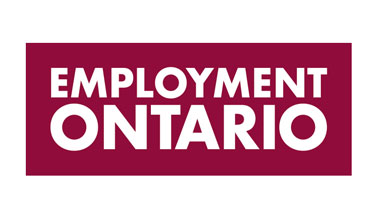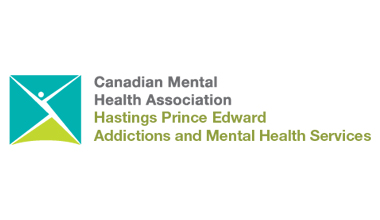
Too Little, Too Late: Reimagining Our Response to Youth Homelessness in Canada
by Kaitlin Schwan, Canadian Observatory on Homelessness, York University
November 16, 2016
Thank you to the Home Depot Canada Foundation who generously funded this study and report. With their support, we have a better collective understanding of youth homelessness in Canada.
Today, the Canadian Observatory on Homelessness and A Way Home Canada release Without a Home: The National Youth Homelessness Survey. As the first pan-Canadian study of youth homelessness, Without a Home provides a comprehensive picture of youth homelessness across the country. Drawing on the experiences of 1,103 youth from 49 different communities across 10 provinces and territories, this study vividly demonstrates why a new approach to youth homelessness is urgently needed.
Our findings indicate that we are waiting too long to intervene when it comes to youth homelessness. In many communities, services for young people who experience homelessness are not available until the age 16 or even 18. Without a Home demonstrates that by that time, a great deal of harm has already occurred.
Who is homeless?
The homeless youth population in Canada is quite diverse in terms of age, gender, and ethno-racial background. Our findings show that at a national scale, these youth are more likely to belong to groups that experience marginalization and discrimination on the basis of gender, sexuality, race, and ethnicity. It is clear that racism, sexism, colonialism, homophobia, and transphobia are crucially related to who becomes and remains homeless in Canada.
Our data indicates that:
- LGBTQ2S youth make up almost a third of youth who are homeless
- Members of racialized communities are overrepresented among homeless youth in Canada (28.2% compared to the Canadian average of 19.1%)
- Indigenous youth are extremely overrepresented, making up only 4.3% of the Canadian population but 30.6% of the youth homeless population
- Newcomer youth make up 10.1% of youth who are homeless
When do youth become homeless?
For many young people, their first experience of homelessness occurs well before they are entitled to access interventions and supports.
A shocking 40.1% of participants became homeless before they were 16, and 10% became homeless before the age of 13.
Youth who leave home at an earlier age not only experience increased hardship before they become homeless, but they also experience greater adversity once on the streets. For example, youth who leave home at an early age are more likely to: experience multiple episodes of homelessness, be victims of crimes, and experience greater mental health challenges.
Why do youth become homeless?
Knowing why youth become homeless can help us understand how to prevent and end youth homelessness. Without a Home highlights some of the complex pathways into homelessness for youth. While there are many drivers of youth homelessness, we found three common experiences that youth face:
1. Housing Instability
Homeless youth often have multiple episodes of homelessness and experience housing instability for years prior to their current experience of homelessness.
- 75.9% of youth had experienced multiple episodes of homelessness
- Of those with multiple experiences, 37% had more than 5 experiences
- Youth who left home before they were 16 were much more likely to experience multiple episodes of homelessness
2. Involvement in Child Protection
A high percentage of homeless youth experience childhood abuse and have involvement with child protection services, often beginning at a very young age.
- 51.1% experienced physical abuse as a child or adolescent
- 24% experienced sexual abuse as a child or adolescent
- 47.5% experienced other forms of violence and abuse as a child or adolescent
- 57.8% of youth had involvement with child protection services in the past
- 73.3% of youth who left home before 16 reported involvement with child protection services
3. Challenges in School
Homeless youth have high drop out rates and experience numerous challenges in school, including bullying, victimization and difficulties related to learning disabilities.
- 50% report being tested for a learning disability
- 83% report experiencing bullying at school either “sometimes” or “often,” 4 times the national average
What do youth experience on the streets?
Without a Home reveals 7 key ways in which homeless youth in Canada face hardship:
- Ongoing housing instability –Over half of youth participants had stayed in more than one location over the previous month, and 10.2% stayed in more than five places.
- High levels of chronicity - Over half of participants (54.8%) were chronically homeless, and 13.3% were episodically homeless. Of those who are identified as chronically homeless, 58% reported being homeless for three years or more.
- Nutritional vulnerability – While 26.8% of youth reported having access to good quality food when they need it, almost half (46.3%) experience this once a week or less. One third (34.7%) reported having little or no energy on a day-to-day basis.
- Declining mental health – A very high percentage of respondents (85.4%) reported high symptoms of distress. A total of 42% reported at least one suicide attempt and 35.2% reported having at least one drug overdose requiring hospitalization.
- Low school participation – While the drop out rate in Canada now sits below 9%, for homeless youth the rate is 53.2%. Of those who have dropped out, however, 73.9% would like to return to school.
- Unemployment – Three quarters (75.7%) of youth indicated they were unemployed, and only 19.7% currently had jobs. Strikingly, 50.5% of youth participants were not in employment, education, or training.
- Criminal victimization – A total of 68.7% of youth had been victims of crime in the last year. While only 7.6% of Canadians report being the victim of a violent crime, 59.6% of homeless youth reported violent victimization in the last year, including high levels of sexual assault.
How can we address youth homelessness?
Our current systems tend to focus on providing supports downstream, when young people are much older. Rather than focusing on preventing the problem, we are more likely to wait for a major rupture or crisis. This study vividly demonstrates the harm caused by this approach.
Without a Home proposes a number of interlocking solutions to youth homelessness including:
Prevention
We cannot end youth homelessness without stopping the flow into homelessness. Many homeless youth cycle in and out of homelessness, school, and work. We must approach each one of these cycles as an opportunity to put prevention strategies in place. Key prevention approaches include Family First, early intervention programs, school-community partnerships, and transitional supports for young people leaving care.
Housing First for Youth
Housing First for Youth (HF4Y) means moving youth out of homelessness as quickly as possible with no preconditions. Through HF4Y, young people are provided with a range of housing options to choose from. Key to this approach is that young people are offered supports that can help them maintain housing, learn life skills, have positive relationships with peers and adults, and re-engage with school, training, and/or employment.
Systems Integration
As opposed to a fragmented collection of services, an integrated systems response requires that programs, services, and service delivery systems are organized at every level – from policy, to intake, to service provision, to client flow – based on the needs of the young person. A key way to implement an integrated systems response is to develop a community plan to prevent and end youth homelessness.
Who is responsible for addressing youth homelessness?
The short answer is that all levels of government in Canada are responsible for addressing youth homelessness.
The State of Homelessness in Canada 2016 explored why investing is affordable housing is absolutely necessary to address all types of homelessness. Without a Home adds to this by demonstrating that the unique drivers of youth homelessness (e.g., family breakdown, interpersonal violence, and problematic transitions from government institutions) touch on many key institutions in society, including healthcare, education, child protection, justice, and employment supports, all in addition to housing.
This means that to address youth homelessness, federal, provincial/territorial, and municipal governments must take an integrated systems approach. Effective strategies reach across departments and ministries to ensure that solutions are coordinated and services are not delivered in a fragmented or inequitable manner.
Key Recommendations to Government:
Without a Home highlights the need to focus on prevention. In most cases, youth experiencing homelessness had adults in their lives that knew something was wrong before they became homeless. But, we are not providing these adults - teachers, guidance counselors, community faith leaders, neighbours, coaches, relatives, doctors - the knowledge, supports, or infrastructure to provide support. To do so, we must implement prevention-focused strategies that engage the whole community and are properly resourced by higher levels of government.
Based on this key finding, Without a Home offers recommendations for all levels of government. The recommendations include:
Government of Canada:
- Implement a Youth Homelessness Strategy supported by a targeted investment.
Provincial and territorial governments:
- Implement targeted strategies to prevent and end youth homelessness.
- Develop strategies to support young people who are under 16 and at risk of homelessness.
- Ensure that all young people who are transitioning from child protection services are supported in a way that ensures housing stability and ongoing support.
Communities and/or municipalities:
- Plan and implement strategies to prevent and end youth homelessness.
- Focus on prevention strategies to move young people out of homelessness instead of expanding emergency services.
By failing to implement more effective strategies to address youth homelessness, we are undermining the human rights of these youth. If we want better outcomes for young people, we must do better.
Kaitlin completed her PhD in Social Work at the University of Toronto where her research focused on Canadian homelessness, activism, and social change. She recently joined the COH team at York University as a postdoctoral fellow. Her postdoctoral work focuses on knowledge mobilization and research impact in the area of homelessness. Kaitlin has worked on research teams addressing a range of social justice issues, including gender equity, cyber bullying, sex trafficking, arts-based programming with youth experiencing homelessness, and social assistance in Canada’s North. Using her background in the arts, Kaitlin also runs jewelry making workshops for women experiencing homelessness and owns a jewelry company called Fierce Deer, through which she employs folks who face barriers to entering the work force.
- Author: Kaitlan Schwan
- Article Source: the Homeless Hub








